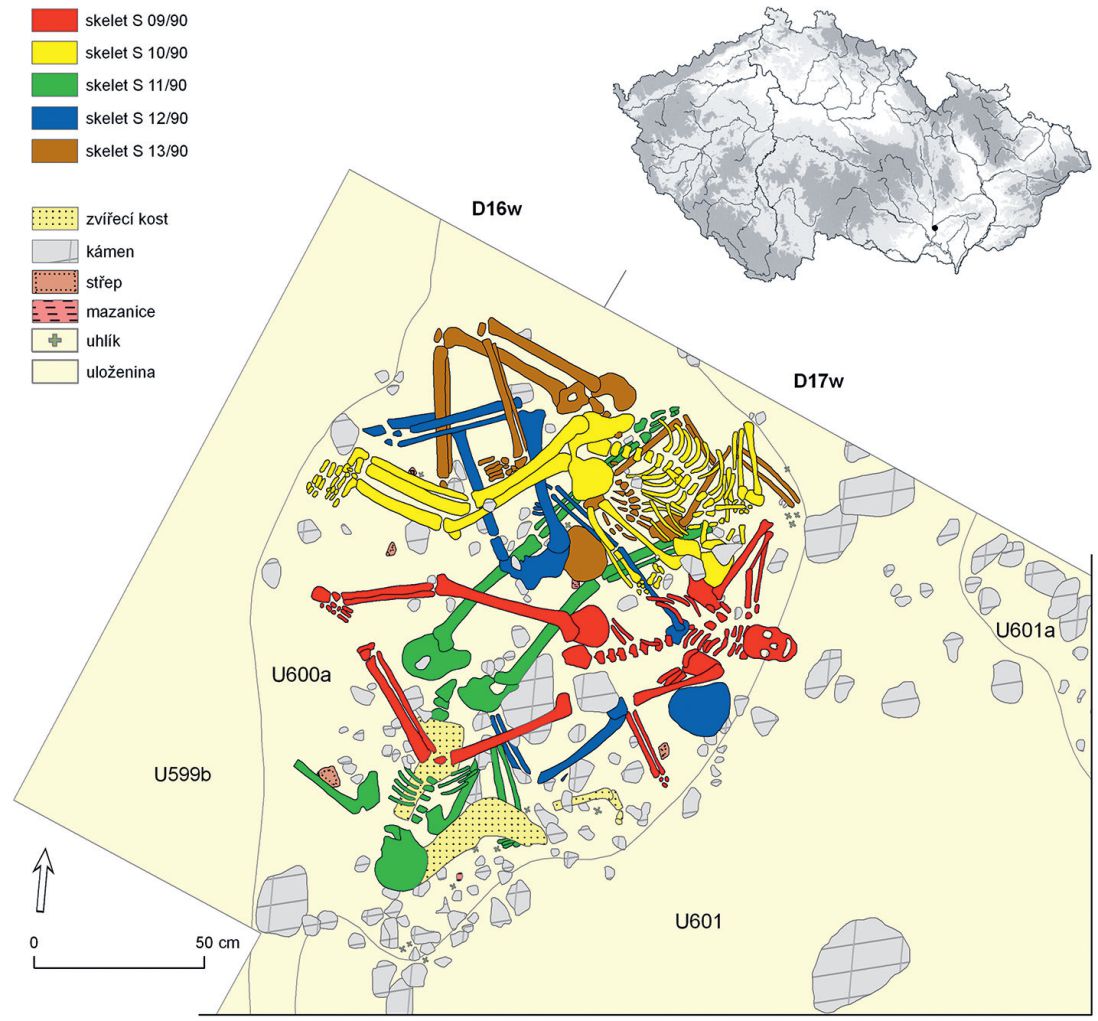New findings about the diet of males from the Late Bronze Age accumulation of human skeletons K7/90 from Cezavy near Blučina, south Moravia
DOI:
https://doi.org/10.35686/AR.2019.10Keywords:
Late Bronze Age, dietary reconstruction, stable isotopes, sulphur, dental microwearAbstract
This paper refines and extends our knowledge about the diet of five adult males from the Late Bronze Age accumulation of human skeletons K7/90 from Cezavy near Blučina site. Due to the poor collagen preservation, the isotopic data were obtained from four of the five humans and four animals. The previously published isotopic results suggested the important role of animal products and potentially also substantial dietary input of marine fish. However, the new sulphur isotopic data together with new isotopic data from comparative faunal sample showed, that neither freshwater nor marine fish represented substantial dietary source. The animal products represented rather a supplement of the diet, which was based mainly on plants. From the plant derived foods, millet played an important role, which may be proved due to its specific carbon isotopic values. According to the results of the quantitative diet reconstruction, millet may well have represented about 50 % of consumed food. This result confirms the previous findings of archaeobotany, suggesting the unprecedented role of millet during the Late Bronze Age. As a part of the revision of previous anthropological findings, the analysis of buccal dental microwear provided complementary information on the composition and consistency of consumed food. The age-at-death estimates of two individuals were refined with the help of tooth cementum annulations (TCA) analysis.
Downloads












